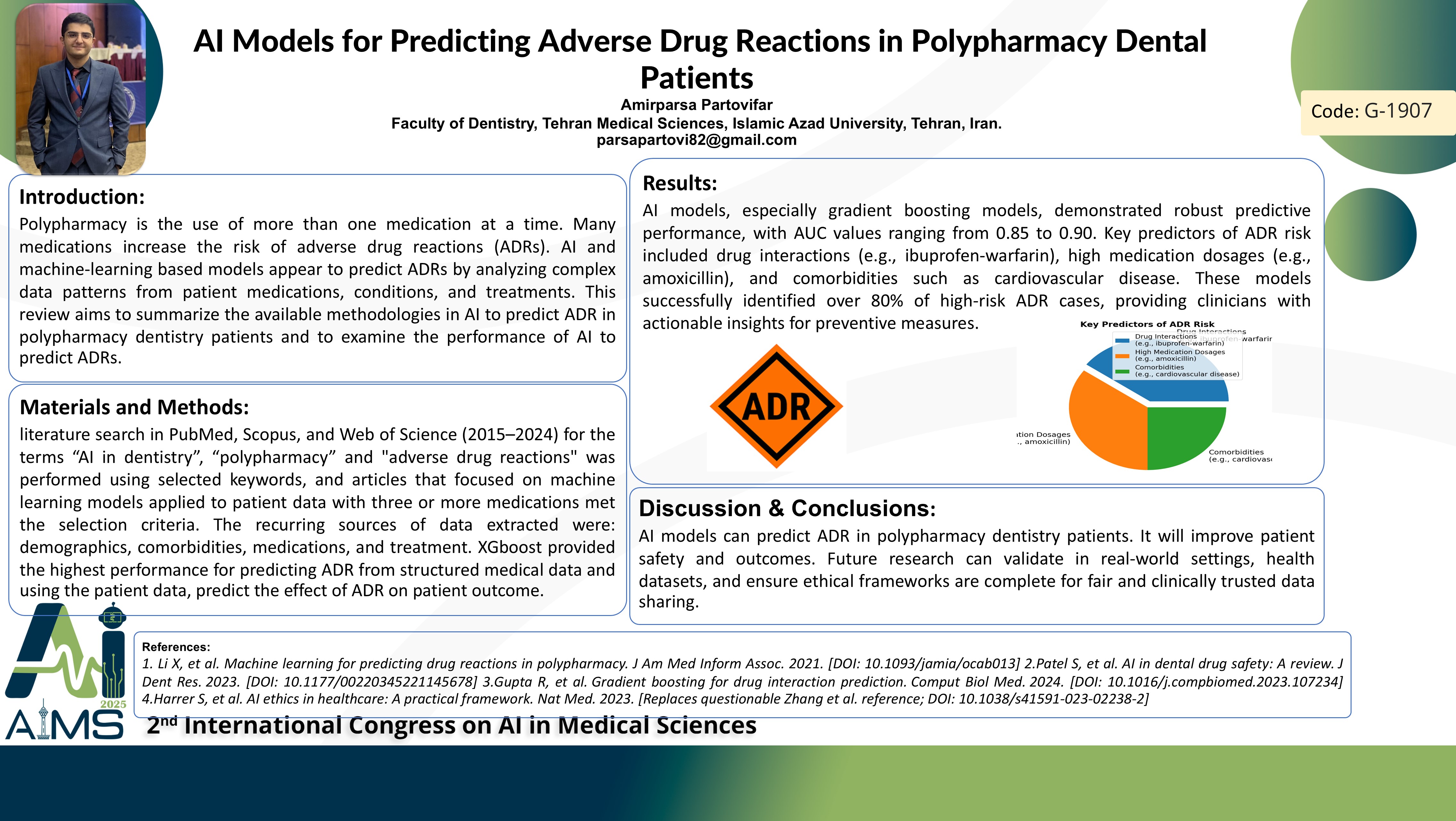AI Models for Predicting Adverse Drug Reactions in Polypharmacy Dental Patients
Code: G-1907
Authors: Amirparsa Partovifar * ℗
Schedule: Not Scheduled!
Tag: Drug Discovery
Download: Download Poster
Abstract:
Abstract
Background and Aims: Polypharmacy is the use of more than one medication at a time. Many medications increase the risk of adverse drug reactions (ADRs). ADRs will be increasingly relevant to dentistry, with polypharmacy being a common occurrence in dental therapy such as extractions and implants. AI and machine-learning based models appear to predict ADRs by analyzing complex data patterns from patient medications, conditions, and treatments. This review aims to summarize the available methodologies in AI to predict ADR in polypharmacy dentistry patients and to examine the performance of AI to predict ADRs. Methods literature search in PubMed, Scopus, and Web of Science (2015–2024) for the terms “AI in dentistry”, “polypharmacy” and "adverse drug reactions" was performed using selected keywords, and articles that focused on machine learning models applied to patient data with three or more medications met the selection criteria. The recurring sources of data extracted were: demographics, comorbidities, medications, and treatment. XGboost provided the highest performance for predicting ADR from structured medical data and using the patient data, predict the effect of ADR on patient outcome. Missing data was addressed by utilizing multiple imputation techniques and accuracy, AUC, sensitivity, specificity and F1-score were used to demonstrate model performance. SHAP values were used to assess feature importance. Results AI models, especially gradient boosting models, demonstrated robust predictive performance, with AUC values ranging from 0.85 to 0.90. Key predictors of ADR risk included drug interactions (e.g., ibuprofen-warfarin), high medication dosages (e.g., amoxicillin), and comorbidities such as cardiovascular disease. These models successfully identified over 80% of high-risk ADR cases, providing clinicians with actionable insights for preventive measures. Conclusion AI models can predict ADR in polypharmacy dentistry patients. It will improve patient safety and outcomes. Future research can validate in real-world settings, health datasets, and ensure ethical frameworks are complete for fair and clinically trusted data sharing. References 1. Li X, et al. Machine learning for predicting drug reactions in polypharmacy. J Am Med Inform Assoc. 2021. [DOI: 10.1093/jamia/ocab013] 2. Patel S, et al. AI in dental drug safety: A review. J Dent Res. 2023.
Keywords
Artificial Intelligence, Dentistry, Polypharmacy, Adverse Drug
